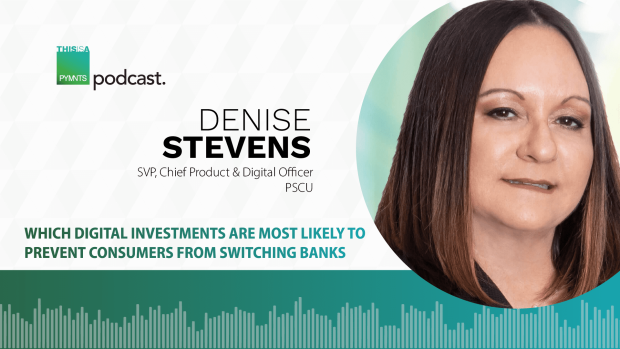Credit Unions Use Digital to Head Off Competition From Big Banks, FinTechs

By and large, credit unions (CUs) are weathering the pandemic well, but nimble FinTechs and resourceful big banks want those loyal CU members as their own, making digital investment and service offerings a hot priority for CUs as the world moves toward an endemic economy.
For the study “Credit Union Innovation: Product Innovation as the Key to Membership Growth,” a PYMNTS and PSCU collaboration, PYMNTS surveyed more 4,800 United States consumers, over 100 CU decision makers and more than 50 FinTech leaders about payment innovation in a climate where 24% were willing to switch their primary banking relationship in 2021.
Get the study: Credit Union Innovation
What we found was a redoubled focus on partnerships and new products to fight off rivals.
As PSCU Senior Vice President and Chief Product and Digital Officer Denise Stevens told PYMNTS, it harkens back to why credit union service organizations (CUSOs) like PSCU formed in the first place.
“CUSOs were developed because credit unions wanted to rally together to get something done collectively that they knew they couldn’t do on their own,” she said.
Nowadays, it’s all about offering members digital products and experiences that are as good or better than what’s on offer from the dozens of competitors, new and established, that would gladly lure them away. That means contactless payments, integrated services, payments choice — the works.
“From a credit union standpoint, if you’re not in a situation to do all that on your own, having partners — CUSOs like PSCU — to be able to provide that integrated, seamless connection of all things payments or all things in financial services, depending on what vertical you’re looking at, makes complete sense,” Stevens said.
Early in the pandemic, CUSOs and their member CUs were seen as lagging in digital and were vulnerable because of it. That perception changed considerably as the sector sprang into action over the past two years.
Experience Is All
If there’s a reason why CUSOs feel that their mission and their very existence have never been more vital to their sector, it comes down to meeting user expectations that are a moving target.
Simply put, CUSOs feel more relevant now because integration has become a top priority.
“Members completely expect when they’re showing up to a branch that they’re going to be able to do the same things” as they would anywhere on an internet connection, Stevens said. That translates to CUs reimagining how they interact with mobile customers in mind, even at the ATM.
“Now they expect everything to be integrated, seamless, at their fingertips, fast,” Stevens explained. “That integration for credit unions on their own is difficult. That’s why CUSOs have become the center of attention for a lot of credit unions trying to conquer the digital appetite out there.”
Self-service is one area that CUs are concentrating on now as their members become more accustomed to remote digital interactions and expect them to work as well as a human teller. PSCU sees the trend. With this self-serve demand comes questions like how to replicate in-branch experiences that surprise and delight customers on digital channels.
She said most of the requests from CUs to CUSOs like PSCU revolve around CUs wanting to stay competitive, especially versus large financial institutions (FIs) that have first-rate digital offerings.
“If you ever applied for a credit card with one of the large banks, it is pretty seamless,” she said. “So, most credit unions are looking for ‘keep me relevant’” solutions that enable satisfying self-serve experiences without sacrificing the member service on which CUs built their reputation.
See also: Credit Unions Use Digital Tools to Keep Members From ‘Moonlighting’ With Rivals
Keeping It Real
As real-time payments start to become ubiquitous, CUs are evolving their offerings to keep pace.
Mentioning the rapid developments with the FedNow Service that’s expected to roll out next year and is now in pilot with 120 organizations, Stevens said CUs and their CUSO partners will pursue real-time payments vigorously to keep competitive with big banks and FinTechs.
Read more: Federal Reserve Onboards First Participants in FedNow Pilot, Including Square
“There’s a ton of use cases that wrap around the opportunity of real-time payments,” Stevens said. “When you think about it from a member’s perspective … what they see is that Venmo works fast. The way that they send Apple Cash works fast. That being replicated for a credit union is essential.”
This is bringing about a new post-pandemic CU, sticking to roots of serving the financial needs of affinity groups as they develop, and staying current with new tech.
In that “blended” world, the integrations Stevens spoke of form the connected economy, and CUs are turning to their CUSO partners to make that happen, as members are in play.
“It is this kind of blending of things that allows members to navigate very easily from channel to channel,” she said. “The future is about this blending of channels, these connected experiences where consumers and members” are now conditioned for a seamless digital encounter.
